Manchurian walnut is a very beautiful and useful plant from the Far East. In appearance, this tree is very similar to walnut: the same tolten and spreading crown, the dark gray bark of the trunk and light gray branches. However, the distinctive features are bright - the leaves of the Manchur walnut are long, can reach one meter, and the sheet plate is larger and has born edges, as well as a pointed tip. In the warm season - in spring and summer - foliage has a bright emerald color, and the autumn becomes golden.
The fruits of the Manchurian nut are significantly less in size, compared with walnut - only 3 cm in diameter. They have a very thick green shell, which in ripening in August-September acquires brown color. On one branch can immediately be located from 2 to 7 nuts. His most important difference between the Manchurian walnut, and its most important dignity is frost resistance. The plant withstands the temperature in -45 °. That is why many gardeners and gardeners wish to plant this culture on their plot. But so that the Manchurian Walnut will take root and brought a good harvest, you need to have appropriate knowledge.
Botanical description of the nut Manychursky
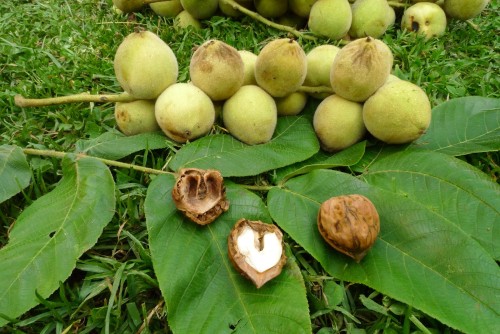
Walnut Manchurian belongs to the walnut family, grows as a shrub in sunny places, one-bedroom to 200 years, both in mixed and coniferous forests. Actively develops to 90 years: up to 20 years old growth is 2 m, and in subsequent years - 50 cm in length and width. The first fruits of Manchurian walnut brings 5-8 years after landing, fully fruits after 12-15 years. Flowers with the onset of heat, mainly in April - May. Interestingly, on one shrub can be formed both women's low-mounted brushes, and male flowers in the form of yellow-green earrings. Polling the plant occurs due to the wind. Manchurian walnut loves moisture very much, so it settles most often near the rivers or in the lower zone of the mountains.
How to grow a manchur nut at home
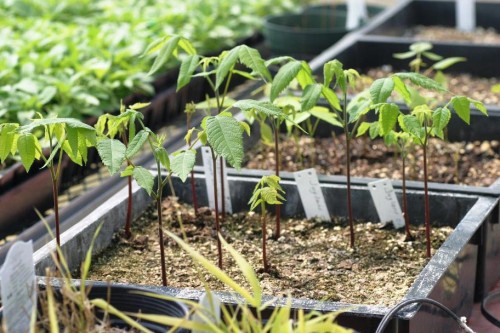
Planting a Manchurian Walnut is a painstaking work that requires compliance with clear rules, patience and time. First you need to grow the seedlings of the Manchurian walnut. How to do it:
- Successing the seeds more expedient to fall in the fall so that the first shoots will appear early in the spring.
- Choose a land area where the soil is most fertile and there are no obstacles for sunlight. It is also important that other nuts grew next to the site, and there were no grapes, which simply disappears when the manchu walnut is taken.
- The selected place is reappeared by 10 cm deep, support the ashes and thoroughly bursting the ground.
- Note the wells so that no more than 10 seeds are placed on 1 m2. Manchurian walnut - a large tree with a powerful rod root and two sidelines, so it requires space for normal growth and development.
- As seeds you need to use the nuts of two years ago, the young and those that lay for more than 3 years are not suitable for sowing.
- Each seed is treated with kerosene so that neither mice nor any other rodents destroyed nuts.
- Nuts lay out in the wells on the edge, while maintaining the distance between each 10 cm.
- Fuck the holes of the earth well and thoroughly inspire them so that the soil keeps the humidity.
When the seedlings go up, they need to be transferred to a permanent place with fertile soil away from buildings. Do it better in the fall. It is important to shorten the central root of each seedling so that the culture is better than growing. A plot where Manchurian Walnut will grow, need to prepare:
- Drop pits for seedlings so that between them was the distance of 10-12 m.
- The volume of each pit should be 80-100 cm.
- In each pit you need to lay any drainage. It is better that it is crushed stone or broken brick.
- Put the drainage of the fertilizer layer to provide the soil with nutrients.
- The upper layer of the soil is sure to mix with a 4: 2 proportion. You can also add Dern and Sand 2: 1 here.
- All pits before landing is important to fill with water.
- Each seedling needs to immediately tie to the peg and climb the soil around them peat, sawdust or foliage.
- For the winter, each seedling need to be insulated with burlap and wrap a special grid to protect against rodents.
Features of the care of manchur nut
- After the seedlock was transplanted, it is important to maintain permanent humidity at its place of its growing. For this every week, especially in the dry time of the year, it is necessary to carry out watering plants.
- So that the stems are not stored moisture, the earth needs to periodically loose, pour it from weeds and mulch.
- In the second half of summer, the Manchurian walnut needs feeding. The best fertilizer option for this tree is superphosphate. It is enough to take 20 g of substances, dilute it in 10 liters of water, and pour the plant with the resulting liquid.
- At the beginning of the spring, the Tree of the Manchurian Walnut needs to be "treated" - to trim the dried or damaged branches.
From the second year of the life of the plant, he can artificially form a crown, making it:
- spacidious tree with a short strabam;
- single-tire tree with a ball shape of the crown;
- a bush with several main trunks. Photo of a manchurian walnut with such a crown is presented below.
conclusions
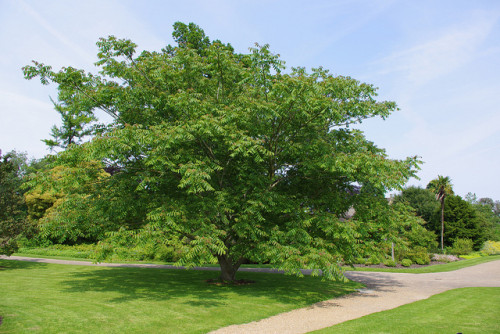
It is very simple to grow a manchur nut at home and is also useful. After all, this tree has antimicrobial and healing properties. It is an excellent honey. From its fruit you can create a medicine, cosmetic or delicious jam. From the crust of the Manchurian walnut, it turns out to make a saturated dark brown paint, and from wood - luxurious furniture items. In the end, this plant can become an excellent decoration of your site.
Video " Growing the nut Manychursky»
This video is the plot from the TV shows "Higher Grade". In it, an experienced gardener Nikolai Baluyev talks about the Manchurian nut, the methods of its landing and the peculiarities of care.


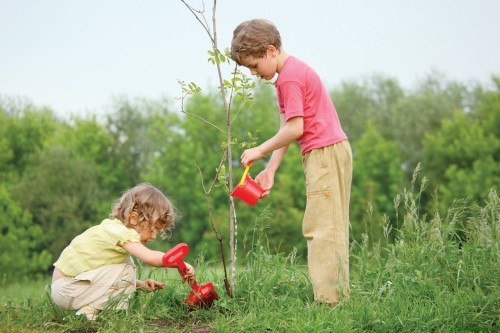
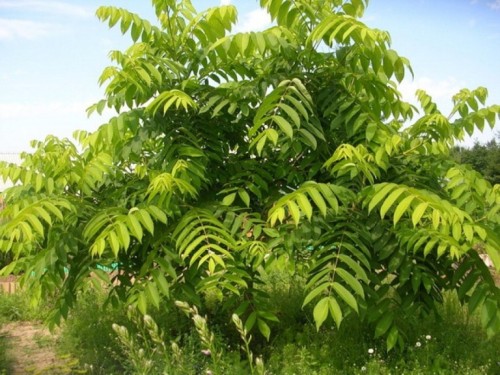












 Start a discussion ...
Start a discussion ...